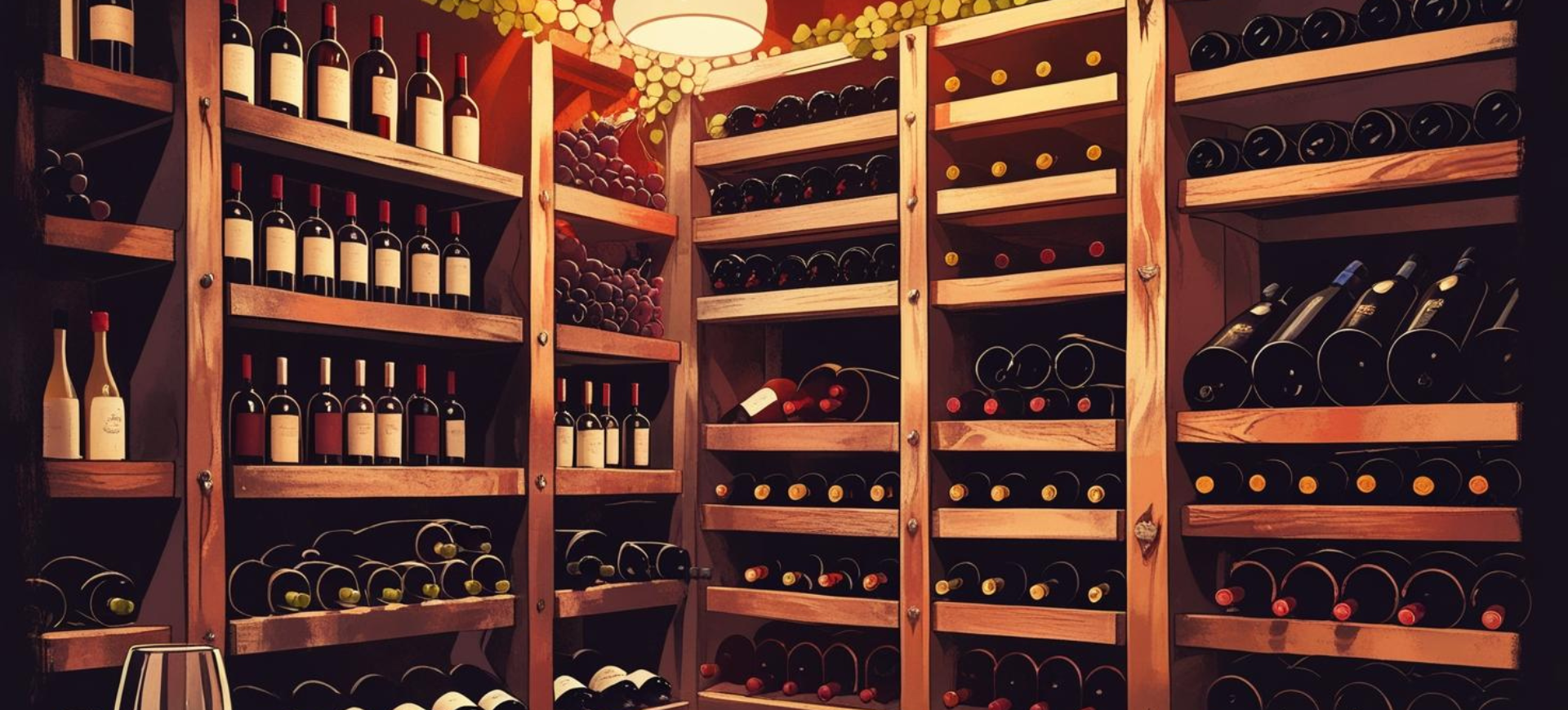Learn how to store wine properly at home by controlling temperature, humidity, and light. A complete 10-step guide to preserving its taste and aroma for longer.
Storing a bottle of wine correctly isn’t just about aesthetics — it’s about making sure it keeps its organoleptic qualities (aroma, flavor, color, and texture) intact over time. Whether you have a full wine cellar or just a couple of bottles at home, knowing how to store wine properly will make a big difference in your wine-drinking experience.
Below are the 10 fundamental tips for storing wine at home, based on professional recommendations and optimal storage practices.

1. Maintain the ideal wine storage temperature
Temperature is the most important factor when storing wine. Experts recommend keeping wine between 50°F and 59°F (10°C to 15°C), with 55°F (13°C) being the sweet spot.
-
-
Temperatures over 68°F (20°C) accelerate oxidation.
-
Temperatures below 41°F (5°C) may damage the cork and the wine.
-
Most importantly: avoid rapid temperature fluctuations.
-
2. Control humidity levels
The ideal humidity level for storing wine should be between 60% and 70%. This is critical for keeping the cork from drying out.
-
-
Low humidity = dry cork and wine oxidation.
-
High humidity = mold growth and damaged labels.
-
A home hygrometer can help you monitor humidity accurately.
3. Store bottles horizontally
Storing wine bottles on their sides keeps the cork moist, preventing it from shrinking and allowing oxygen in.
-
-
Especially important for bottles with natural corks.
-
Not necessary for screw-top wines.
-
4. Protect wine from light
Light — especially direct sunlight or fluorescent lighting — breaks down compounds in wine.
-
-
It negatively affects flavor and aroma.
-
Ideally, store wine in a dark space or use tinted bottles.
-
5. Eliminate vibrations
Wine needs to rest undisturbed. Constant vibrations can prevent natural sedimentation and disrupt the aging process.
-
-
Avoid placing bottles near appliances, speakers, or high-traffic areas.
-
6. Use a wine fridge if you don’t have a cellar
A wine cooler or wine fridge is perfect for modern homes. It keeps temperature and humidity stable without needing much space.
-
-
Compact, quiet, and energy-efficient models are available.
-
Perfect for storing both red and white wines properly.
-
7. Don’t use a regular refrigerator
Though it’s tempting to use your kitchen fridge to store wine, it’s not ideal:
-
-
Too cold and dry for long-term storage.
-
Can dry out the cork.
-
Wine may absorb odors from nearby foods.
-
8. Choose the best spot in your home
If you don’t have a wine fridge, find a cool, dark place like:
-
-
Under the stairs.
-
A deep cupboard.
-
A DIY insulated cabinet.
-
Avoid kitchens, attics, or garages due to heat and vibration.
9. Take care of opened wine bottles
Once a bottle is opened:
-
-
Reseal it and store it upright.
-
Drink within 1 to 5 days depending on the wine type.
-
Use vacuum pumps or inert gas systems to extend shelf life.
-
10. Understand wine shelf life
Not all wines are meant to age:
-
-
Young wines: best within 1 to 3 years.
-
Aged wines (Crianza, Reserva): can last 5 to 15 years.
-
Special cellaring wines: over 20 years possible.
-
Keep a record of the name, vintage, grape variety, and estimated best-before date.
Conclusion
Knowing how to store wine properly at home is key to enjoying it at its best. Keep bottles at the right temperature and humidity, protect them from light and vibration, store horizontally, and invest in a wine fridge if possible.
You don’t have to be a sommelier to take care of your wine. With these 10 practical tips, your bottles will stay in perfect condition — ready to deliver their full flavor and complexity with every pour.
To learn more about the world of wine, the Rioja DOCa, and our winery, don’t hesitate to visit our blog every Thursday and follow us on social media: @ziniobodegas.